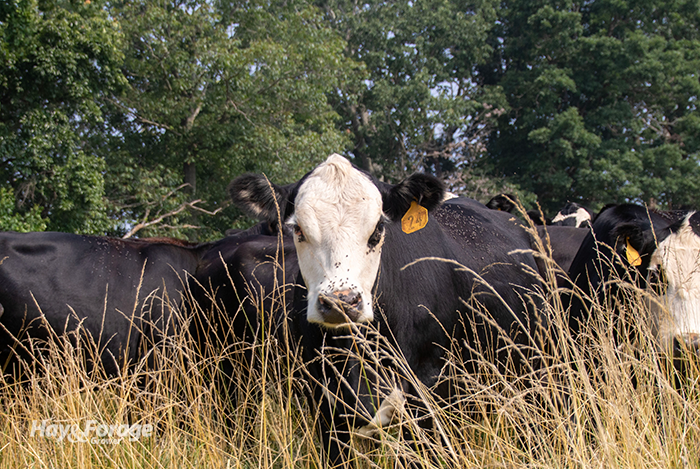
As of this writing, a large portion of the United States is trapped under a heat dome. Several days of dangerously high temperatures are forecasted for what the National Weather Service is declaring the first significant heat wave of the season.
While I am grateful that I can take refuge from the scorching sun and intense humidity inside a comfortably air-conditioned building, grazing cattle don’t have the same luxury. Not only do cattle experiencing heat stress exhibit higher respiration rates, panting, and restlessness, but the combination of high temperatures and high humidity can take a toll on conception rates, growth rates, and milk production. This comes at a time when many spring-calving herds are in the middle of breeding season.
In a publication from University of Kentucky Cooperative Extension Service, a team of specialists explain that animals experience heat stress when they create and absorb more heat than they can dissipate. Under severe heat stress, they report that conception rates can fall below 10% compared to the 40% to 60% conception rates that are commonly observed during cooler months. This can be made worse when the primary forage cattle have access to is toxic fescue.
The endophyte fungus present in Kentucky-31 tall fescue produces toxic alkaloids that can cause animals to experience vasoconstriction. The specialists explain that vasoconstriction reduces blood vessel diameter and further prevents stressed livestock from properly dissipating heat. Fescue toxicosis also inhibits hair-coat shedding, depresses hair follicle cycling, and reduces sweat gland productivity.
“The combination of vasoconstriction and decreased ability to sweat and shed hair significantly increases susceptibility and complications from heat stress,” the specialists write.
Bad breed back
Heat stress has a negative effect on every phase of the reproductive process. It dampens estrogen production, which can result in weak estrus and interrupt ovulation. The specialists write that heat stress also suppresses the growth and function of the corpus luteum, which can reduce progesterone concentrations, resulting in poor embryonic development and early fetal loss.
A high temperature-humidity index (THI) during days 21 to 30 of pregnancy enhances the risk of pregnancy loss. However, cattle grazing toxic fescue are more susceptible to heat stress and pregnancy loss at lower THI compared to cattle grazing other forages.
“Fescue toxicosis can decrease conception rates by increasing the susceptibility to heat stress, even when environmental conditions would otherwise be considered thermoneutral,” the specialists write.
Another hallmark of fescue toxicosis is reduced feed intake, which impedes average daily gain and body condition. The specialists note beef cattle exhibit the best conception rates when their body condition is 5 or greater and they are consuming ample feed. Those experiencing fescue toxicosis, on the other hand, may struggle to maintain body condition suitable for breeding.
With all that said, hot weather and impending heat domes are largely out of farmers’ control. Therefore, managing for heat stress and toxic fescue will be necessary to ensure animals are healthy and productive. “Fescue toxicosis and heat stress need to be mitigated as much as possible to improve reproductive success,” the authors assert.
The most effective long-term solution would be to renovate stands to a novel-endophyte variety of tall fescue; however, the costs and resources to do so may not be feasible for every farmer or in every field. Diluting pasture with legumes such as red clover can curtail fescue toxicosis. Seeding warm-season annual forages to graze during the heat of the summer is another strategy to avoid toxic fescue when temperatures spike.
Manage grazing rotations to keep cattle off of toxic fescue pastures during peak breeding season. Moreover, ensure animals have ample shade and water. If fescue toxicosis and resulting heat stress are a recurring problem in your herd, the specialists suggest shifting to a fall calving schedule so breeding season takes place during cooler months like November and December.
Read the full publication titled “The impact of heat stress and fescue toxicosis on beef cattle reproduction” here. Contributing authors are Tyler Purvis, Les Anderson, Darrh Bullock, Kevin Laurent, Jeff Lehmkuhler, and Katie VanValin with the University of Kentucky Extension.

